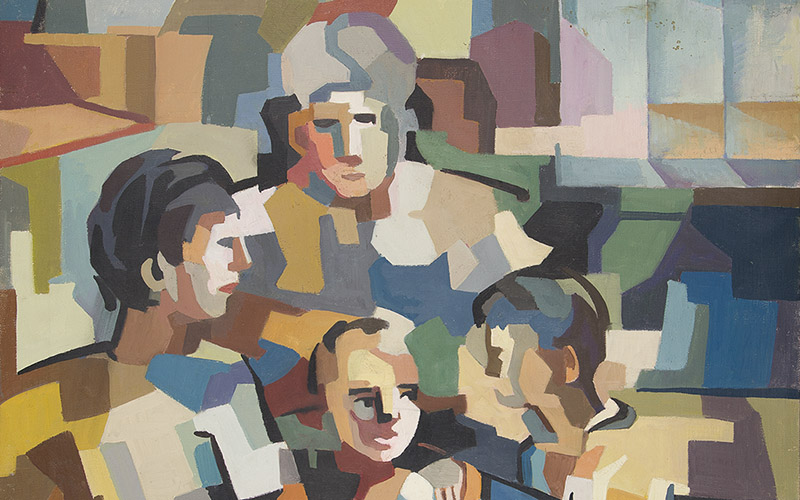
Art and Architecture between Lisbon and Baghdad
The Calouste Gulbenkian Foundation in Iraq, 1957-1973
Event Slider
Date
- Mon, Wed, Thu, Fri, Sat and Sun,
Between 1957 and 1973, the Calouste Gulbenkian Foundation was an active contributor to the development of the cultural, educational, scientific and welfare infrastructure of modern Iraq, promoting and supporting higher education, the arts and the construction and equipment of buildings.
This exhibition presents unpublished documents relating to three key achievements in Baghdad – the Modern Arts Centre, the People’s Stadium and the 1966 Gulbenkian Cultural Week – and Iraqi works unexpectedly held in the Modern Collection, shown together here for the first time. This exhibition constitutes a dialogue between cultural development and economic diplomacy, between Iraqi and Portuguese art and architecture.
The project is promoted by the Calouste Gulbenkian Museum and the Art Library and Gulbenkian Archives, with the support of the Grants Department.
Topics


The Gulbenkian Cultural Week

Exhibition of international art

Modern Arts Centre

Iraqi art section

Gulbenkian Art Prize

Scholarships for Iraqi artists
-
The Al-Shaab Stadium
The Al-Shaab Stadium (the People’s Stadium), the sports complex inaugurated in 1966 in Baghdad, was the pièce de résistance of the Calouste Gulbenkian Foundation’s strategy to further the cultural, educational, welfare and scientific development of Iraq. This project benefited from earlier experiences such as increased support for local initiatives since 1957 and the completion of the Modern Arts Centre in 1962 in particular. With a programme of significant scale and complexity, this was also the most important work undertaken by the Foundation outside Portugal in the 1960s – comparable only to the construction of the Foundation Headquarters and Museum in Lisbon.
Because of its visibility and novelty, the complex was the central element of the public relations efforts that accompanied the Gulbenkian philanthropy operations in the country. The structure, a direct intervention by the Foundation which survived several changes of regime and government, was consistently presented as instrumental in developing a new national identity: physical activity and sport would play a fundamental role in the everyday life of the new Iraqi – and republican – citizenry.

View of the uncovered stands at the Al-Shaab Stadium, Baghdad, c. 1965. Gulbenkian Archives. 
Al-Shaab Stadium, Baghdad. Stands structure, P1 portal-frame (construction plans), 1962. Indian ink on tracing paper. Gulbenkian Archives. 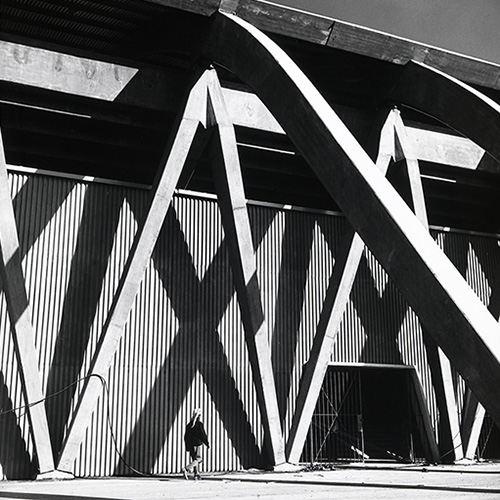
Rear face and entrances to the covered seating of Al-Shaab stadium, Baghdad, c. 1966. Gulbenkian Archives. -
-
The Gulbenkian Cultural Week
Between 6 and 13 November 1966, the Gulbenkian Cultural Week was held in Baghdad by the Foundation to mark the inauguration of the sports complex of the the People’s Stadium in the Iraqi capital. The Cultural Week included concerts by the Gulbenkian Chamber Orchestra and Choir and other events, such as the presentation in the Modern Arts Centre, built by the Foundation in 1962, of a large exhibition of Portuguese and international art. These works would form the initial basis of the Modern Collection and were gathered together then for the first time. The Cultural Week was also an opportunity for the Foundation to acquire a rare set of Iraqi artworks and to deepen its policy of support for the training of, and production by, local artists. The establishment of a material infrastructure was accompanied by the promotion of artistic creation.

Marcelino Vespeira (1925-2002). Original poster for the Cultural Week promoted by the Calouste Gulbenkian Foundation in Baghdad, 1966. Pedro Vespeira collection. -
-
Exhibition of international art
The Foundation organised the Exhibition of Works of Contemporary Art belonging to the Calouste Gulbenkian Foundation at the Modern Arts Centre (MAC) during the Gulbenkian Cultural Week in 1966. The exhibition brought together a total of 70 works, including 51 paintings, 6 drawings and 13 prints produced by 48 Portuguese and 22 international artists. The works shown in Baghdad had been recently acquired by the Foundation. The exhibition on the first floor of the MAC was open to the public for two weeks under the high patronage of the Ministry of Culture and Guidance of Iraq.
A selection of these works is presented in this exhibition and in the gallery dedicated to painting from the 1960s in the Modern Collection building.

Waldemar da Costa (1904-1982). ‘Composition in Blue’, [1960]. Acrylic paint on canvas. Modern Collection, inv. PE36. 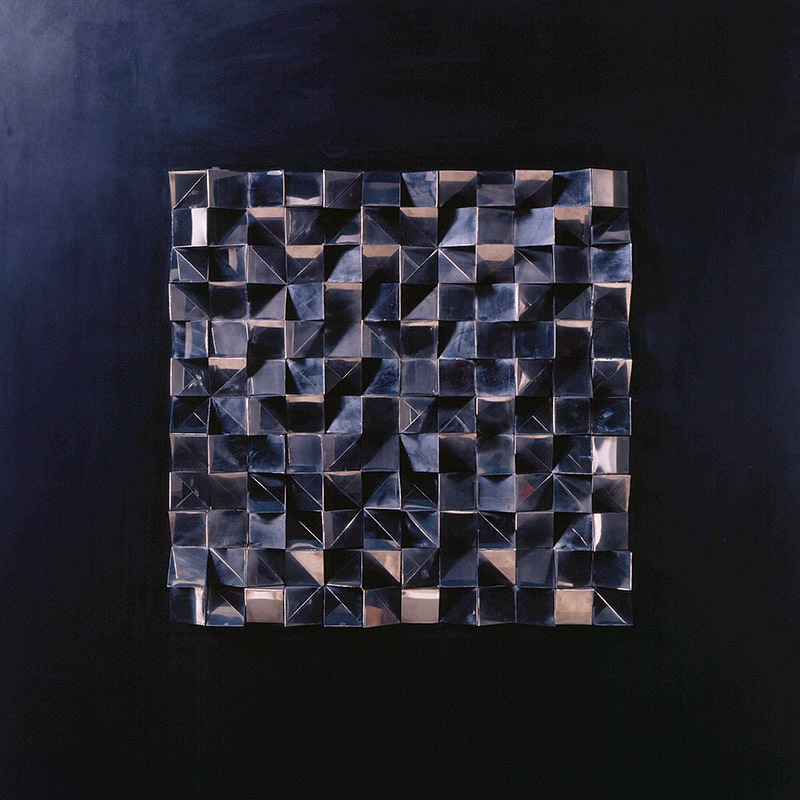
Mary Martin (1907-1969). ‘Nine Groups’, 1964. Stainless steel, painted wood and formica. Modern Collection, inv. RE9 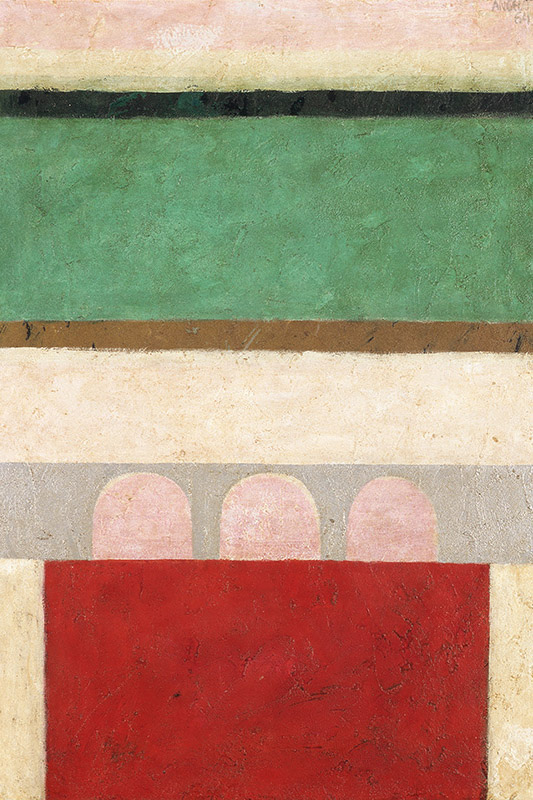
Ângelo de Sousa (1938-2011). ‘Bridge’, 1964. Oil and plaster on hardboard. Modern Collection, inv. 65P265 -
-
Modern Arts Centre
The idea of supporting the construction of a modern art centre – something completely lacking in Baghdad to that point – as an incentive for contemporary artistic production corresponded with the Foundation’s objectives of financing educational, cultural, welfare and scientific projects in Iraq. The Modern Arts Centre in Baghdad, inaugurated in 1962, was the calling-card project of the Calouste Gulbenkian Foundation’s operations in Iraq: a technically simple and pragmatic project. It also responded to an unquestionable need with clear cultural aims. A direct intervention – and not the provision of a grant, as would become the norm from then on – would demonstrate the institution’s capacity for serious accomplishment. It would also serve as a rehearsal for the final work built directly by the Foundation, the Al-Shaab sports complex.
Between the adjustment of the project brief and the execution design stages, this process shared between Portuguese and Iraqi technicians is strongly reflected in the admittedly unpretentious architectural result.
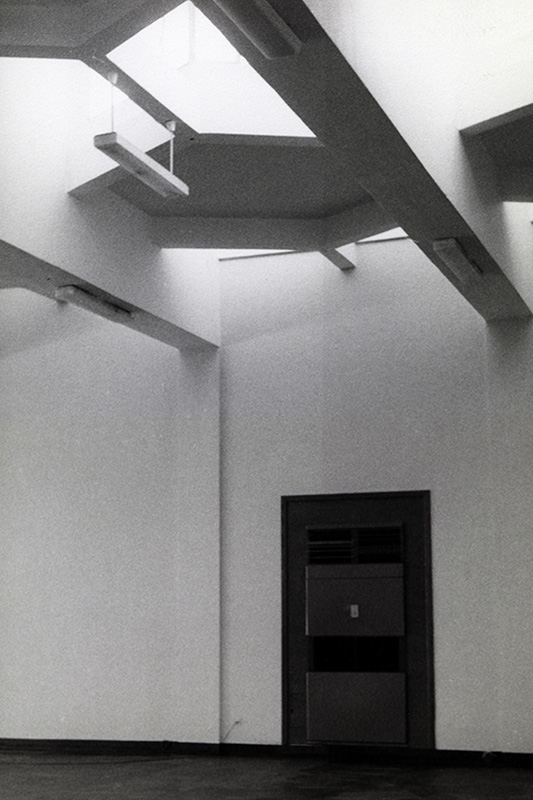
Interior of the temporary exhibition room (ground floor) of the Modern Arts Centre, Baghdad, November 1966. Gulbenkian Archives 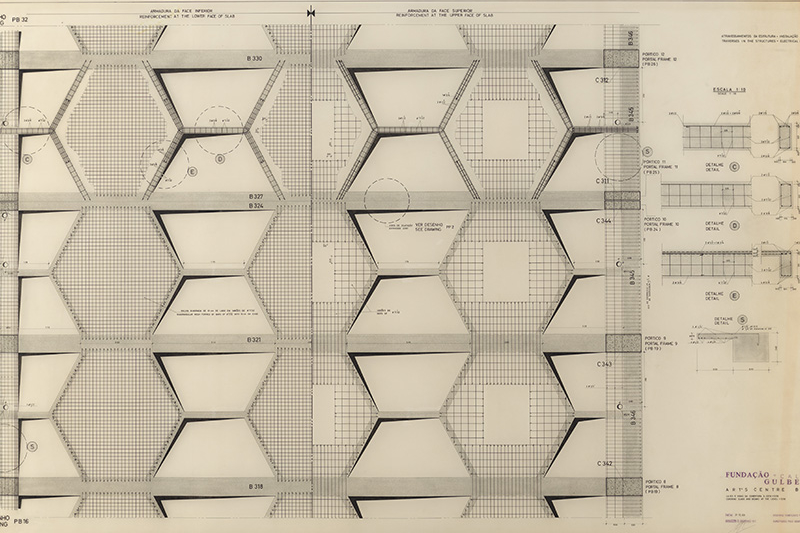
Plan of the roof slab and beams for the structural design project of the Modern Arts Centre, Baghdad, December 1960. Gulbenkian Archives 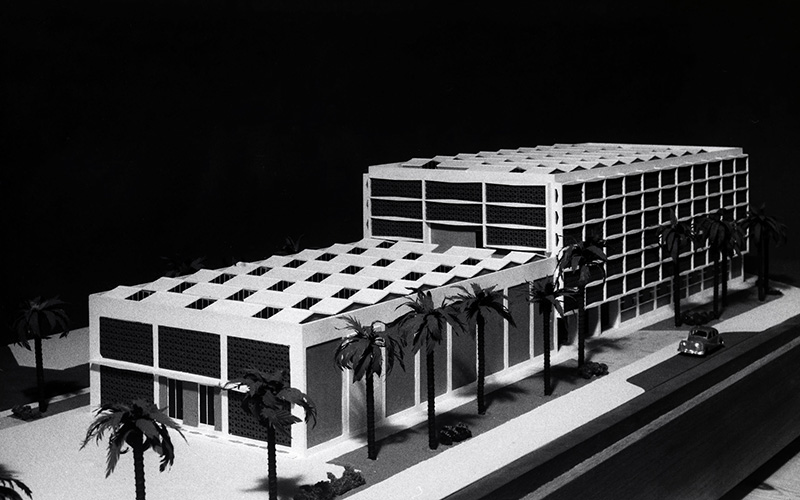
Model of the Modern Arts Centre, erected in Baghdad, December 1960. Gulbenkian Archives -
-
Iraqi art section
In December 1962, during a visit to Baghdad by the President of the Foundation, José de Azeredo Perdigão, and the Director of the Middle East Affairs Department, Robert Gulbenkian, the first set of 12 paintings by Iraqi artists were acquired by the Foundation. A large number of these works are shown here: paintings by Faik Hassan, Lorna Selim, Hafidh Al-Droubi, Ismael Al-Shaikhli, Saadi al-Kaabi, Khalid Al-Jadir and Nezar Selim. Some of these artists had studied at art centres in London, Paris and Rome, presenting work clearly developed in dialogue and interpretation of European modernism and fusing the Arab tradition with avant-garde styles.

Hafidh Al-Droubi (1914-1991). ‘Family 2’, 1962. Oil on canvas. Modern Collection, inv. 16PE331 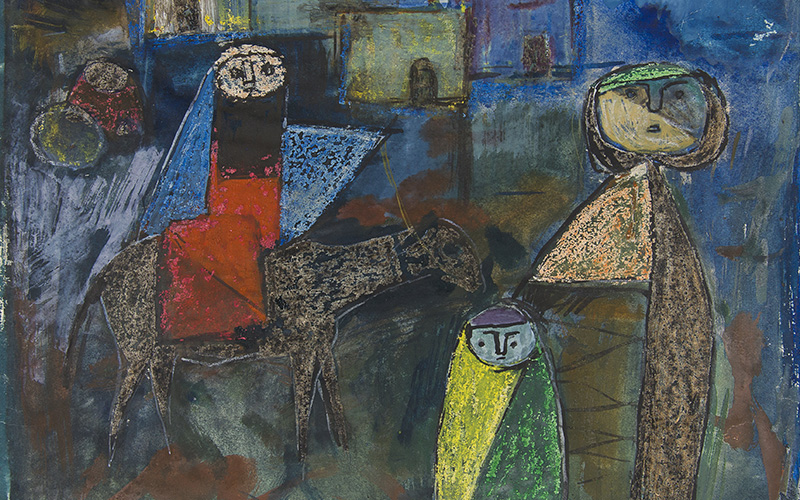
Faik Hassan (1914-1992). 'Abstract’, c. 1962. Gouache on paper. Modern Collection, inv. 16DE175 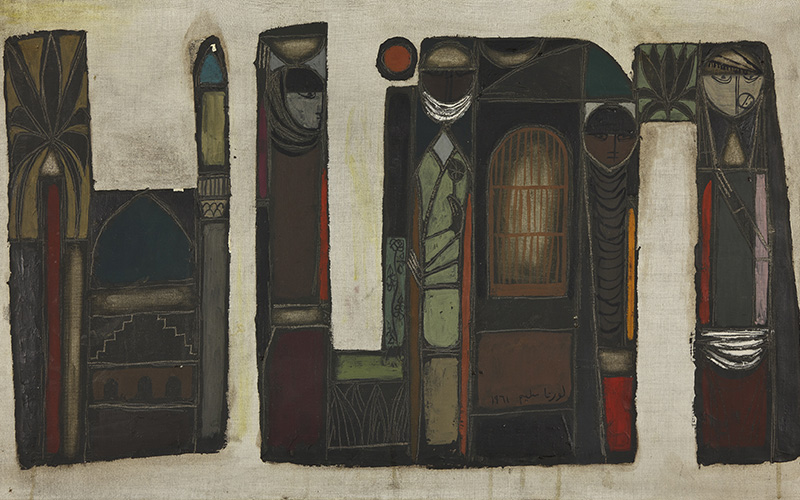
Lorna Selim (1928). 'Oriental Widow’, 1961. Oil on canvas. Modern Collection, inv. PE305 -
-
Gulbenkian Art Prize
The Calouste Gulbenkian Foundation decided to intensify its role in fomenting an art scene in Baghdad with the creation of the Gulbenkian Art Prize, overseen by a committee led by the renowned Iraqi art critic and historian Jabra I. Jabra. Each year over a period of five years, an Iraqi painter and a sculptor would be awarded an approximately 35-gram gold medal of 3.5cmdiameter. The design of the medal was commissioned by the Foundation directly from the Portuguese sculptor Joaquim Correia, who reproduced the seal of the institution on the face of a plaster model. The medal was delivered in a leather case along with 200 Iraqi Dinars and a certificate.
The first edition in 1964 recognised the painter Faik Hassan and the sculptor Mohammed Ali, while in the second edition, in 1966, two painters were chosen: Lorna Selim and Kadhim Haider. The committee took the decision not to award a sculptor, since it was considered that painting was developing at a greater speed than sculpture, which caused a stir among artists and complications for the prize’s future, which was finally discontinued.
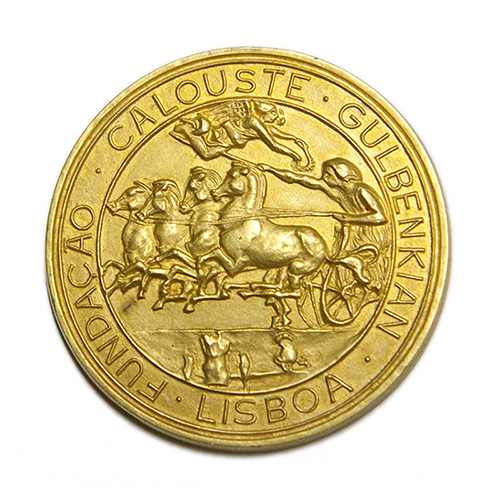
Gulbenkian Art Prize Medal, 1966. Gold. Mrs Lorna Selim collection -
-
Scholarships for Iraqi artists
Following the Gulbenkian Cultural Week in 1966, three young Iraqi artists – Rafa Nasiri, Salim al-Dabbagh and Hashim Samarchi – successfully applied for funding to study in Europe, arriving in Lisbon as recipients of Calouste Gulbenkian Foundation scholarships to attend a course at GRAVURA [the Portuguese Printmakers Cooperative] between September 1967 and November 1968. This was the first time the Cooperative had received foreign artists for the purposes of developing art within their workshops. Subsidised by the Foundation, the course was directed by Alice Jorge and João Navarro Hogan. In the final course report, Alice Jorge noted the notable professionalism displayed by the artists, who during the months of the course had become familiar with the full gamut of printmaking techniques, evolving aesthetically. They established good relations with the Portuguese artists and participated in three group exhibitions while in Portugal. The return of Rafa, Salim and Hashim to Baghdad following their stay in Lisbon marked the beginning of the development of printmaking in Iraq.
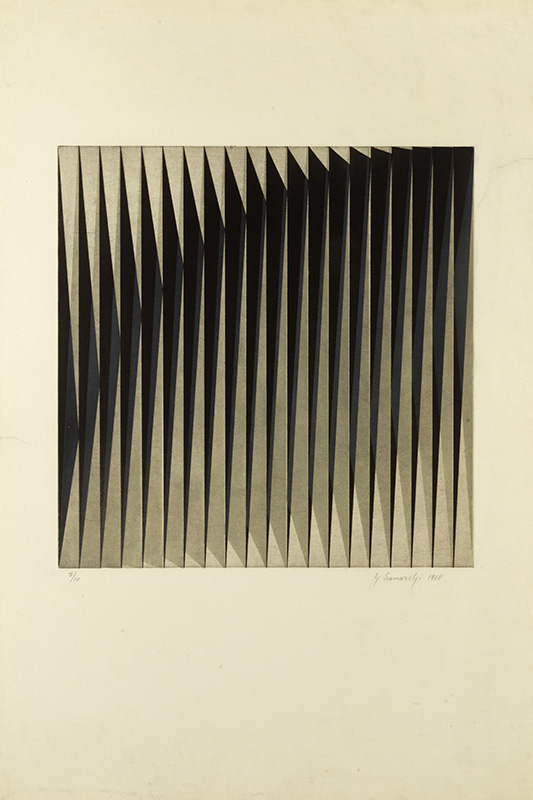
Hashim Samarchi (1937). Untitled, 1968. Aquatint on Fabriano paper. Edition: 5/10. Modern Collection, inv. GE685 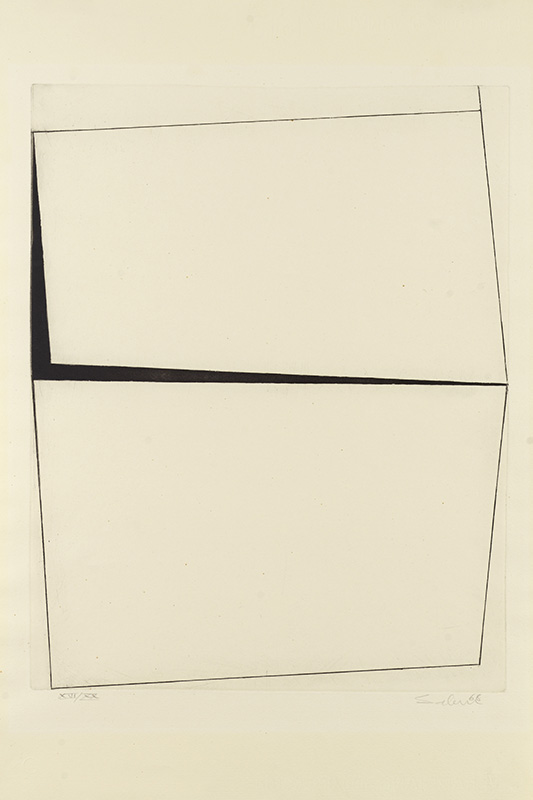
Salim Dabbagh (1941). Untitled, 1968. Aquatint on paper. Edition: XVI/XX. Modern Collection, inv. GE746 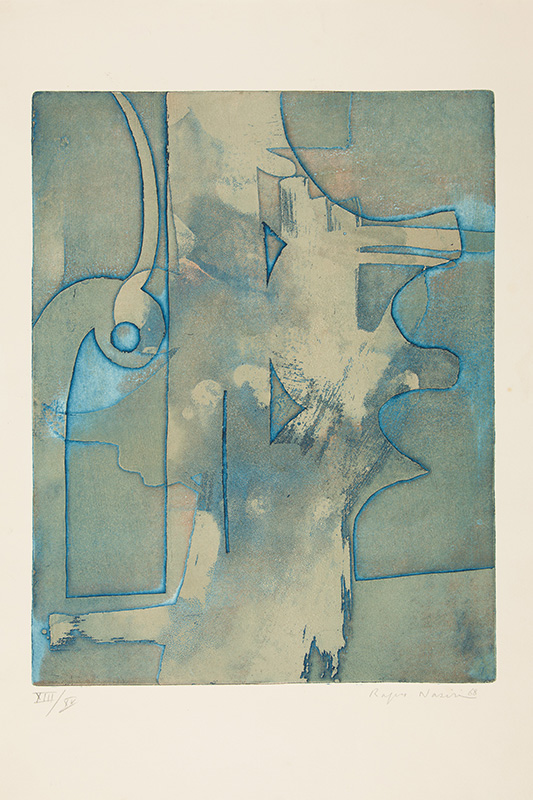
Rafa Nasiri (1940-2013). Untitled, 1968. Mixed media on Fabriano paper. Edition: XIII/XV. Modern Collection, inv. GE788 -
Complementary Programs
Talk with the curators Patrícia Rosas and Ricardo Agarez
Friday, 26 October, 15:00
Saturday, 10 November and 19 January, 16:00
About contemporary Iraq
With Paulo Moura
Tuesday, 11 December, 18:00 – Art Library
Guided tours
Saturday, 27 October, 16:00
Saturday, 1 December and 26 January, 15:00
In Portuguese only
An Alternative Future
Thursday and Friday, 25 and 26 October, 17:00 – Auditorium 3
In English
This initiative of the Calouste Gulbenkian Foundation as a member of the Future Architecture Platform, a project that is co-funded by the Creative Europe Programme of the European Union.
Know more
Rethinking the Past
International Conference Memory / Archive / Document – Arts and Architecture
With Andreas Huyssen, Ernst Van Alphen and Catherine David
Thursday and Friday, 8 and 9 November, 09:30 – 19:00 – Auditorium 3 and Room 2
In Portuguese and English
Know more
The 1960s in Iraq: Art and Culture
With Nada Shabout
Wednesday, 9 January, 18:00 – Auditorium 3
In English
Know more
The Arab Center for Architecture
With George Arbid
Saturday, 12 January, 17:00 – Auditorium 3
In English
Know more
In Portuguese, English or French
Booking
(+351) 217 823 800
[email protected]
More information
[email protected]
